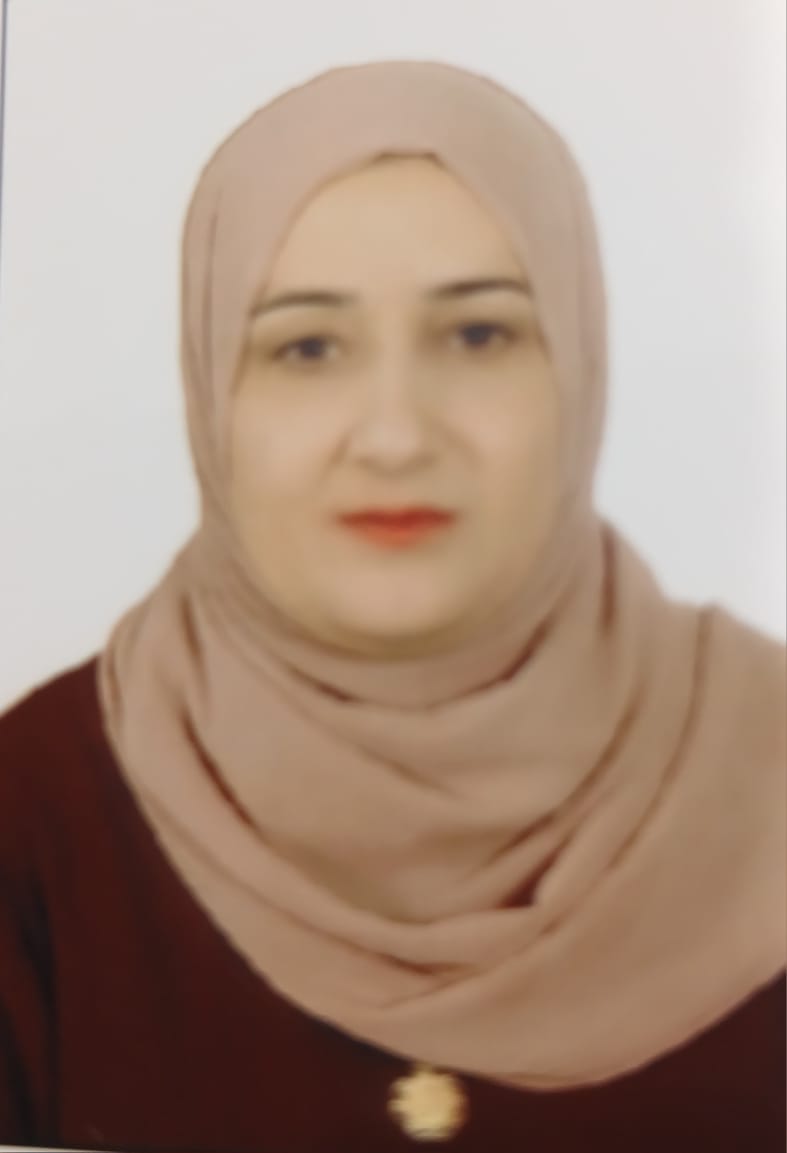
Rawaa Mohammed Jarjees Ahmed
Research InterestsMarofungi
Antibacterial
Antioxidant
| Gender | FEMALE |
|---|---|
| Place of Work | Mosul Medical Technical Institute |
| Department | Radiology Techniques |
| Position | Academic |
| Qualification | Ph.d |
| Speciality | Biology |
| rawaa.jarjees73@ntu.edu.iq | |
| Phone | ٠٧٧٠١٨٨٨٤١٢ |
| Address | Aldubaat, Mousl, Mosul, Iraq |
Publications
Alginin: A Natural Alternative to Antibiotics Used for In vitro Inhibition of Clinically Propionibacterium acnes Growth from Adolescents in Mosul City/Iraq.
Nov 20, 2024Journal Journal of Bioscience and Applied Research
Abstract: Context: Acne is an inflammatory disease of the sebaceous glands that results in the formation of papules, pustules, and more advanced complicated scars by opportunistic micro-organisms that are known as Propionibacterium acnes which feed mainly on fat. The need to reduce the use of antibiotics and the discovery of medicinal plant treatments, due to the resistance of Bacteria over time. Propionibacterium acnes is a gram positive bacterium that plays the main role in the development of some diseases. Aims: This study aimed to investigate the effect of Alginin which was extracted from Pleurotus ostreatus fungus on Propionibacterium acnes. Method: The study involved (100) samples, which were collected from 75 patients suffering from acne, 65 samples of comedones, and 35 pustules, ages ranging between (14-20) years. All samples were collected from adolescent patients in Mosul City/Iraq. All samples indicated the presence of P. acne. Results: A marked effect was observed through the inhibition of the growth of Propionibacterium acnes as the diameter of inhibition of the extract of Alginin ranged between 9.5 mm to 11.5 mm. So, we suggest the possibility of using Alginin as an alternative to antibiotics in the treatment of skin affected by acne.
First recording and molecular diagnostics of three ascomycetous macrofungi from Nineveh, Iraq
May 26, 2023Journal Journal of Advanced Education and Sciences
Abstract This research project has referred to three of macrofungi (Ascomycota): Geopora foliacea, Helvella leucopus and Peziza vesiculosa. The first two types of macrofungi have been collected from Al- Nimrud area ،While the third type (Peziza vesiculosa) was collected from Mosul Dam northern of Mosul. The samples were diagnosed phenotypically and microscopically, as their morphological and microscopic characteristics were determined. Moreover, the samples were molecularly identified by DNA sequencing data. These macrofungal species are recorded for the first time from Iraq.
First recording and molecular identification of two basidiomycetous macrofungi from Mosul/ Iraq
Jan 2, 2023Journal Journal of Advanced Education and Sciences
Abstract In this study, referred to two of macrofungi (Basidiomycota): Abortiporus biennis (Polyporales) and Inocutis Levis (Hymenochaetales). The first one type of fungus has been collected from Al- Kubaa area located 13 km northwest Mosul. And the fungus Inocutis Levis was collected from Al-Nimrud district, located 37 km southwest Mosul, Iraq. These fungi were described based on their morphological and microscopic characteristics. The samples were molecularly identified by DNA sequencing data. These macrofungal species are recorded for the first time from Iraq.
Study of the effect of incubation periods and the source of carbon and nitrogen in the growth of the fungus Aureobasidium pullulans and the production of gluconic acid
Aug 1, 2013Journal مجلة التربية والعلم
ABSTRACT In this study (16) different local isolates of the yeast like fungus Aureobasidium pullulans were obtained. These isolates were isolated from uninfected leaves of many wild and cultured plants. These isolates were identified as real isolates of A.pullulans depending on the microscopic examination to determine the polymorphic form of this fungus. These isolates were screened regarding their efficiency to produce gluconic acid. Two isolates only, A.pullulans MU1 and A.pullulans MU2 showed a high ability to produce gluconic acid. The two isolates were tested to produce gluconic acid in the liquid media. A.pullulans MU1 showed a high ability to produce gluconic acid after three days of incubation and therefore this isolate was selected in the latter experiments. In order to enhance the ability of the isolate to produce the acid we study the effect of the medium culture components from carbon and nitrogen source on the production. The results showed that best carbon source to produce maximum quantity of the acid was sucrose at the concentration of 15% so gave (15.1) g/L and best nitrogen source was ammonium chloride at the concentration of (4.8) g/L so gave (25.45) g/L of gluconic acid





